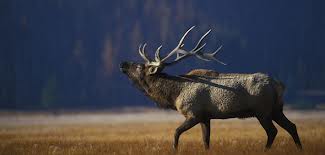“Knowledge will forever govern ignorance, and a people who mean to be their own governors must arm themselves with the power knowledge gives. A popular government, without popular information or the means of acquiring it, is but a prologue to a farce or a tragedy or perhaps both.”
–James Madison
For months, WDFW officials have been claiming the mysterious elk hoof disease ravaging the herds of southwest Washington is likely caused by treponema bacteria. At a public meeting in Longview on March 27, WDFW Director Phil Anderson told the nearly 300 citizens in attendance that regarding treponema, “We’ve got some pretty strong evidence and we’ll figure out whether we’re 99% sure or 90% sure here pretty soon.”
Now that percentage of certainty hovers somewhere between slim and none.
On June 3rd, numerous members of WDFW’s highly vaunted technical advisory group expressed serious doubts that treponema could be the root cause of elk hoof disease. Though the bacteria do appear to be involved, the unmistakable consensus was that treponemes are secondary or tertiary to other, more systemic factors.
“[Treponemes] are possibly playing a role, but they’re not the entirety,” said Jennifer Wilson, a research microbiologist with the USDA.
“I buy the fact that it’s acting like a novel introduced disease. I’m just saying this treponema data does not support that,” said Tom Besser, a specialist in Veterinary Microbiology and Pathology at WSU.
“I also have a little bit of a concern because the treponema hypothesis still requires an initiating event… Until you figure out what that triggering event was you’re not going to be able to really understand the disease,” said Dr. Anne Fairbrother, an Ecotoxicologist with Exponent Engineering and Scientific Consulting.
“You’re mentioning lots of different bacteria. That’s one piece of the puzzle… but there are other things that seem to be missing in the puzzle. Big pieces. The big pieces are the environmental factors and why this particular region and not other regions,” said Dale Moore, an expert in preventive veterinary medicine at WSU.
Now, more than 20 years since the onset of elk hoof disease, and nearly 5 years since they began “actively” investigating this condition, WDFW is left without a single viable working hypothesis. Despite all of this, WDFW officials still insist they are giving it their best effort.
Asked to weigh in on the matter, wildlife activist Bruce Barnes said, “They’re playing the public for a bunch of fools.”



